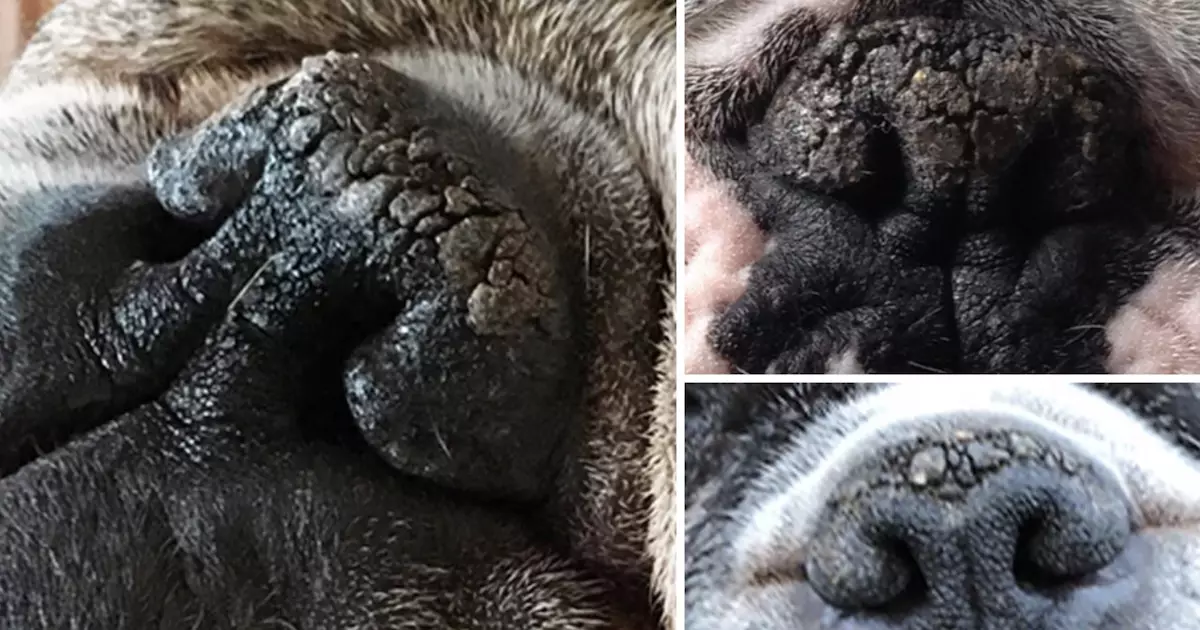Nasal hyperkeratosis is a condition that often gets overshadowed by more serious health concerns; however, it can significantly impact a dog’s quality of life. This idiopathic ailment leads to excessive keratin production on the nose, resulting in a dry, crusty surface that can be uncomfortable for our furry friends. Though not life-threatening, it deserves our attention.
It’s intriguing how certain breeds tend to exhibit this condition more frequently. Bulldogs, Boxers, and Poodles, among others, often have a predisposition to experiencing this issue, highlighting the genetic components that intertwine with environmental factors. The core of the problem could stem from the unique physical traits of these breeds, such as brachycephalic structures often leading to compromised immune responses. As responsible pet owners, awareness of these breed-specific vulnerabilities is crucial for preventative care.
Symptoms and Diagnosis
While the primary symptom is an excessively dry and crusty nose, some dogs might exhibit further signs such as discomfort while eating or playing. The challenge lies in recognizing that while nasal hyperkeratosis isn’t an urgent medical emergency, the discomfort it brings shouldn’t be dismissed. A simple veterinary check-up is essential for an accurate diagnosis, ensuring that any underlying issues are addressed. Observing your pet’s behavior and noting changes can provide vital information that helps your veterinarian recommend the best treatment options.
Natural Treatments and Remedies
For those looking to alleviate their dog’s symptoms, various topical solutions are available, one of the more popular being Natural Dog Company’s Snout Soother. It’s a go-to for many pet enthusiasts, boasting an array of beneficial oils like shea butter and coconut oil, which work synergistically to create layers of moisture on your dog’s snout. The beauty of this product lies in its multifaceted approach—providing immediate soothing relief while ensuring long-term hydration.
Application is relatively simple, requiring consistent effort. Owners should aim to apply the balm 2-3 times daily for the first few days, monitoring for any progress. If crusts begin to soften and fall away, transitioning to a maintenance schedule of reduced applications can be a commendable strategy to keep the nose healthy.
Beyond the Balm: Holistic Care for Your Dog
While topical treatments provide physical relief, no approach is complete without considering overall health. A dog’s immune system plays a pivotal role in its well-being, making a nutritious diet and regular veterinary check-ups integral to prevention. Look into high-quality foods that boost immunity and reduce potential allergens.
Creating a nurturing environment by limiting exposure to harsh elements can also help in managing this condition. Cold weather, dry air, or excessive sun can exacerbate nose dryness. Therefore, being attuned to your pet’s habitat plays a vital role in maintaining their comfort.
Incorporating these caring practices not only addresses nasal hyperkeratosis effectively but also strengthens your bond with your canine companion. Preventative measures coupled with immediate interventions can lead to a happier, healthier pet that thrives in every aspect of life.

